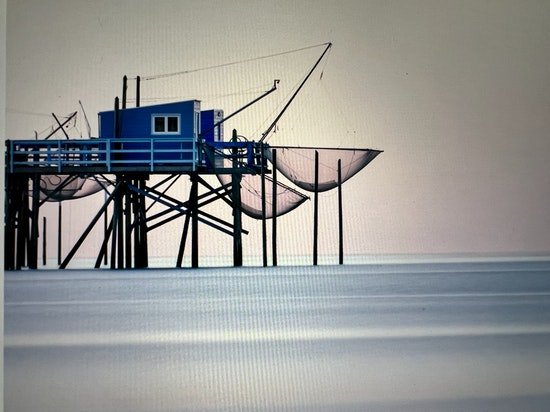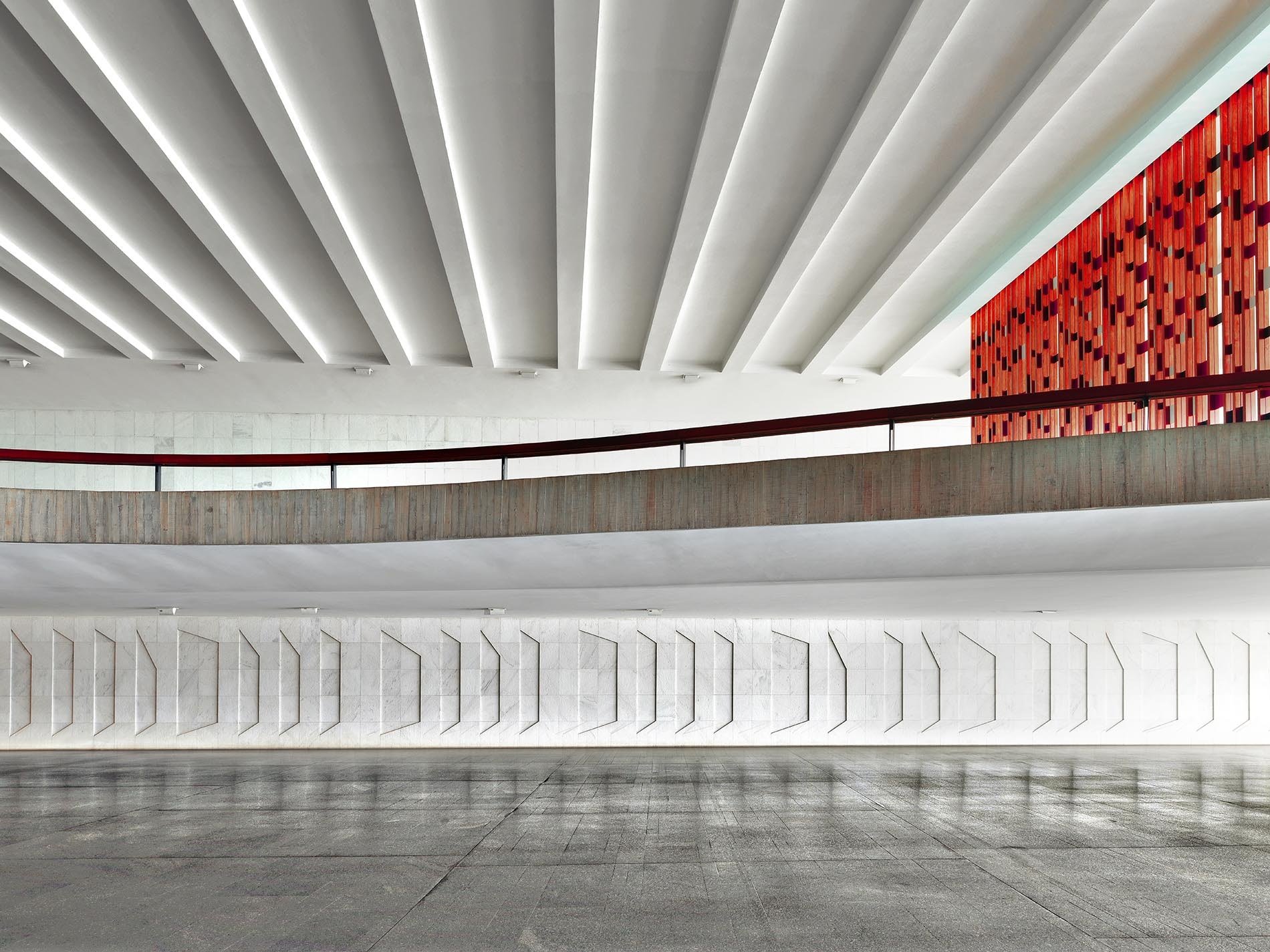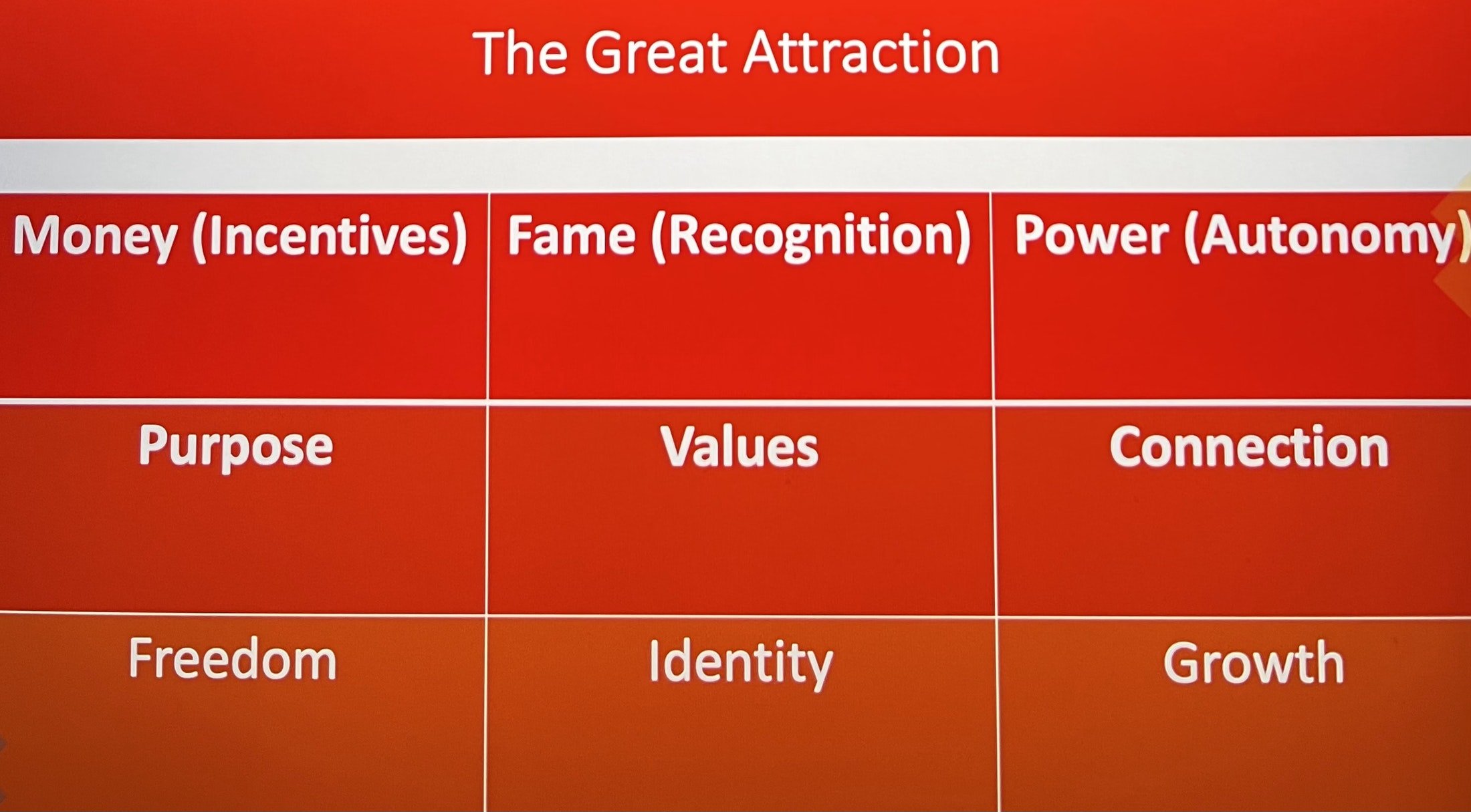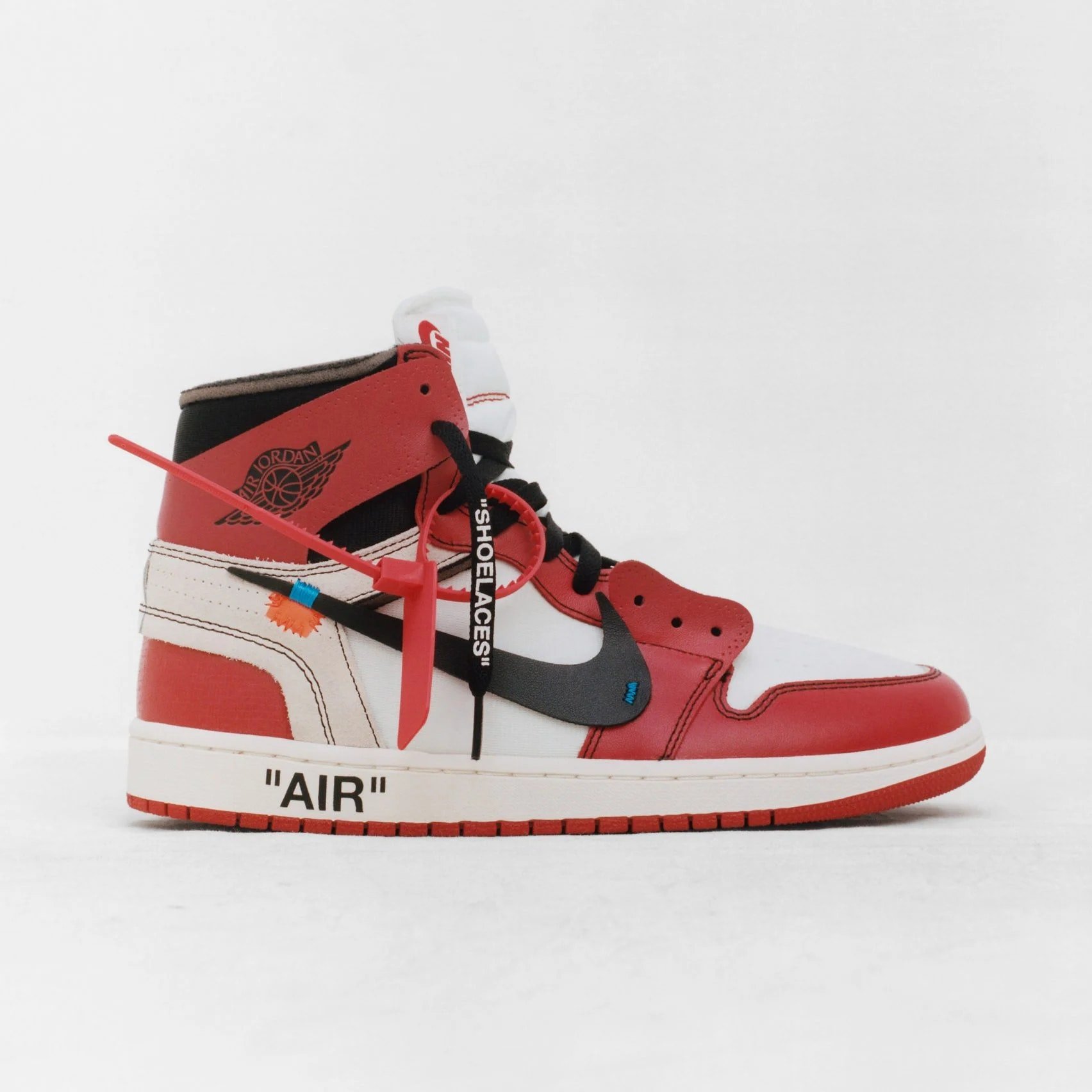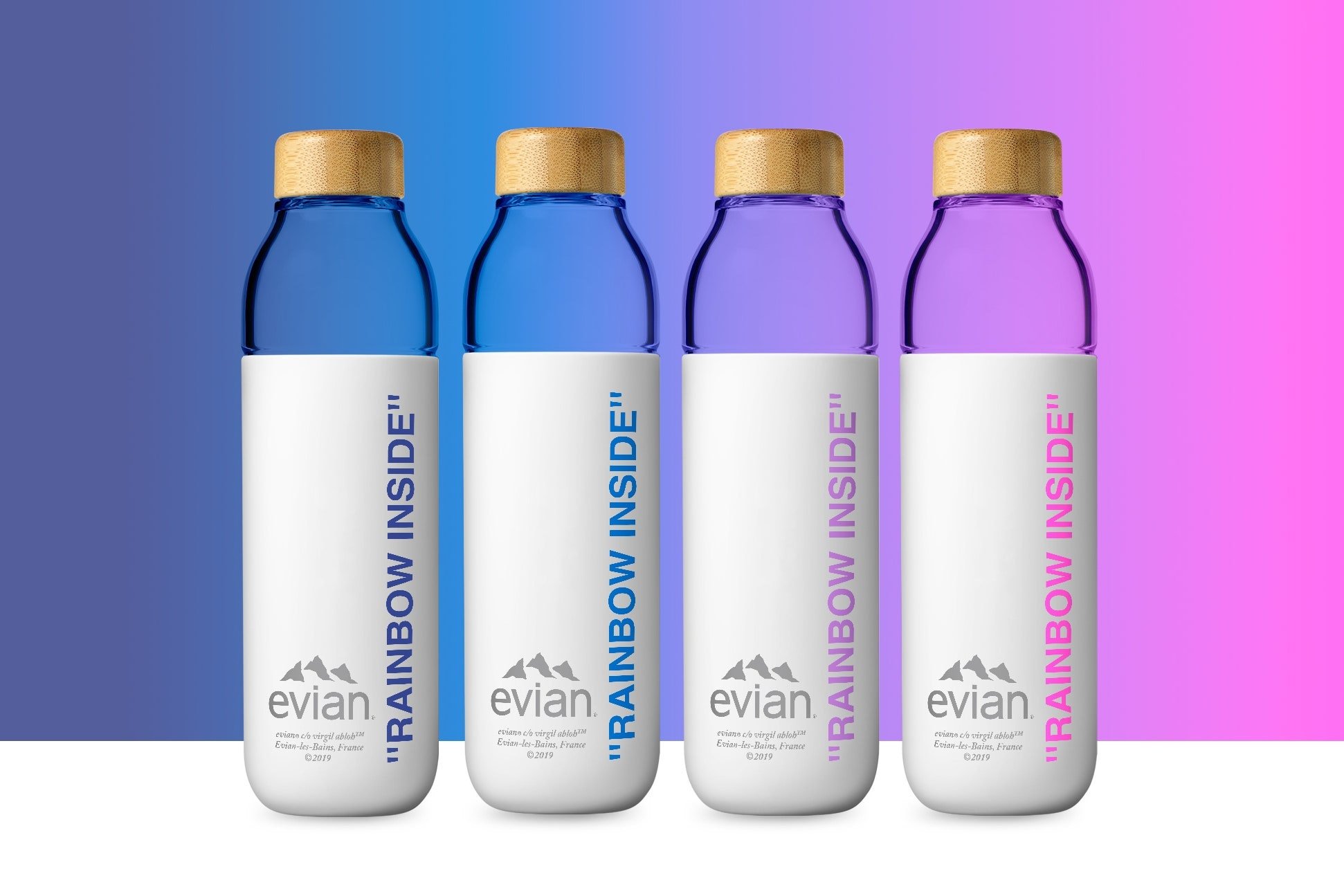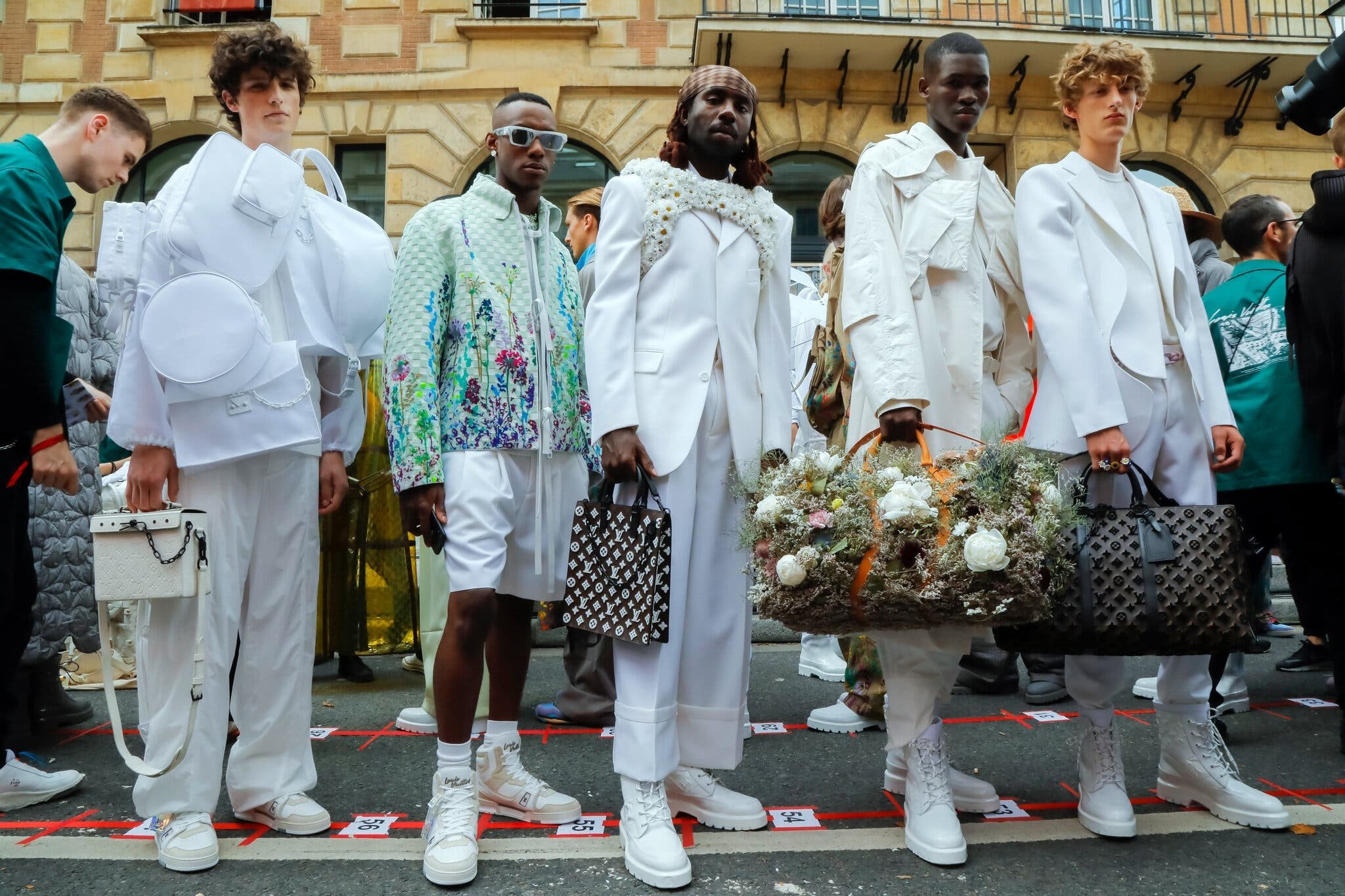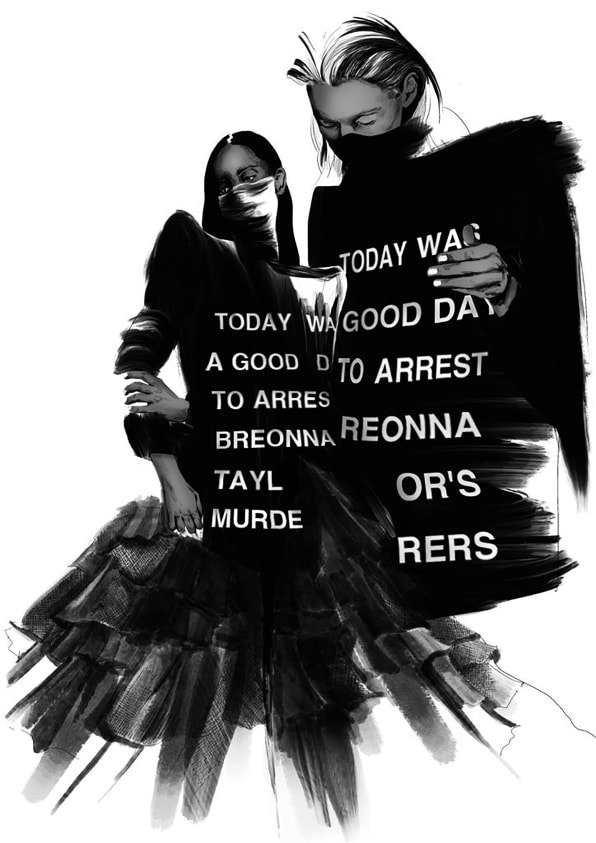Story. Place. Loss.
Photography by Team Hocking
Earlier this week, Joan Didion passed away at the age of 87.
She was an accomplished screen writer, novelist, journalist, and essayist who sculpted sentences that combined precise words infused with feeling.
Three themes that echoed through her work were that of story, place, and loss.
As we end 2021 Joan Didion’s writings can help us understand the time and place we are in, understand the story of our lives and find ways to adjust to ways of living that seem to be lost to the passing of time.
The the only thing predictable in the future is going to be the constant unpredictability in a world of rapid technological change, a million battling narratives, demographic shifts, the elastic nature of what work and careers might be and the vast internal and external migrations taking place around the world.
Joan Didion was prescient in noting that we may find succor in story, place and dealing with loss.
Photography by Team Hocking
The importance of narrative.
Joan Didion’s most famous sentence might be “we tell ourselves stories in order to live”
In many ways each of us is a compilation of stories who intersect with other people who are compilations of stories and when we meet it often like splicing two separate films into new stories about us versus just a story of you and me.
Today amidst a timeline of stories, algorithmic stories, curated stories, and embellished to pixel perfection stories, we hunger for stories real, relevant and resonating that help us make sense of our lives and the world around us.
And while our internal story telling brings order and narrative and helps us make sense of our disconnected moments and find ways to resurrect and re-invent ourselves, we can also lose our bearing and sense of reality with some stories.
The critic Michiko Kakutani noted “one of the recurrent themes in all Didion’s books, both fiction and nonfiction, is Americans’ penchant for reinventing themselves, their belief in fresh starts and second acts — a faith, on the one hand, that helped settle this country and fueled the American dream, and yet, on the other, has resulted in rootlessness and anomie, the discarding of personal and public history. Narratives, Didion suggests, can provide order, but that order can also be an illusion — or, worse, in the case of political spin masters, a disingenuous connecting of the dots meant to sell false gods and shoddy goods.
Stories are neither good nor bad but what they teach us and how we incorporate them into our lives makes them so.
Photography by Team Hocking
The influence of place.
Confucius said “No matter where you go, there you are”
But even if we take our old selves to new places, we believe that a change of scene can mean a potential change of self.
Place defines most people. We are defined by where we were born, brought up and where we live.
Some people cannot wait to leave where they are while others pine to return from where they came. Others move from place to place in quest of fame, fortune, family and more.
If life is a journey through time and space in search of meaning, place plays a key role.
We often leave a place to go somewhere else to re-invent ourselves and begin with a fresh sheet of paper
Joan Didion was forged in California which has always lingered in the imagination as where one goes to do become something else.
To play a new role.
Of California, Joan Didion wrote “We believed in fresh starts. We believed in good luck. We believed in the miner who scratched together one last stake and struck the Comstock Lode.”
And all of us may have our internal or external California.
But in the end, she believed it was not continuously leaving but staying and putting down roots that mattered.
It is as much as what we bring to a place and make of it as it makes of us.
“A place belongs forever to whoever claims it hardest, remembers it most obsessively, wrenches it from itself, shapes it, renders it, loves it so radically that he remakes it in his own “
And true contentment comes down when one finds a place put down roots, to stay and to fix whatever goes wrong.
“You have to pick the places you don’t walk away from.”
It does only courage to leave a place but courage to stay.
Photography by Team Hocking
The reality of loss.
If there are three realities to life they are learning, love and loss. Not everybody succeeds at learning or love, but everybody gets a graduate degree in loss and a doctorate when people very close die.
Joan Didion wrote two books on the loss of her husband “The Year of Magical Thinking” and her daughter “Blue Nights” which are read by many dealing with loss.
She wrote of the fragility of life noting that her husband died while eating dinner: “Life changes fast. Life changes in the instant. You sit down to dinner and life as you know it ends” and the loneliness afterwards :“A single person is missing for you, and the whole world is empty.”
And as time moves forward and people, places and hopes come and go people are shaped by what is no more.
“We are imperfect mortal beings, aware of that mortality even as we push it away, failed by our very complication, so wired that when we mourn our losses we also mourn, for better or for worse, ourselves. As we were. As we are no longer. As we will one day not be at all”
But in the end Didion notes we go on by forging new stories and finding new places and begin forgetting.
“We forget all too soon the things we thought we could never forget. We forget the loves and the betrayals alike, forget what we whispered and what we screamed, forget who we were.”
But one must forge ahead…
“Do not whine...Do not complain. Work harder. Spend more time alone.”
And to college graduates a few years ago she made the case for living deeply…
“I’m not telling you to make the world better, because I don’t think that progress is necessarily part of the package. I’m just telling you to live in it. Not just to endure it, not just to suffer it, not just to pass through it, but to live in it. To look at it. To try to get the picture. To live recklessly. To take chances. To make your own work and take pride in it. To seize the moment. And if you ask me why you should bother to do that, I could tell you that the grave’s a fine and private place, but none I think do there embrace. Nor do they sing there, or write, or argue, or see the tidal bore on the Amazon, or touch their children. And that’s what there is to do and get it while you can and good luck at it.”
Career Turbocharging
Photography by Massimo Listri.
For well over a decade, I have been in the fortunate position to help guide people as they look for jobs, evaluate opportunities and navigate their careers.
While my advice is always customized to the individual situation (stage of career, staying or leaving an industry, finding oneself in a fork in the career road or finding oneself stuck without any forward momentum or sometimes unfortunately without a job) there is one exercise I recommend to every person.
It is The Nine Word Exercise.
Today many are evaluating where they work, why they work, how they work and who they work for, this exercise could be one resource to help guide the way.
Photography by Massimo Listri.
The Nine Word Exercise.
The nine-word exercise requires one to identify three words that describe one’s niche, voice, and story.
Niche: What are the three words that describe what you are very good at? What expertise, craft, or subject matter knowledge do you have an edge in?
Employers are looking for specific skills, competitive edge, and depth of experience.
Voice: Three words that describe who you are? While niche is about what you are good at, voice is about who you are as a person and your personality.
People today do not follow titles, but they follow people. So, who are you?
Story: Why should people believe you ? What three words describe your journey and experiences that give a reason to believe?
While niche calls out what you are good at, and voice describes who you are, story lets you explain what forged and made you.
Here are my nine words.
Niche: Future. Change. Innovation.
Voice: Authentic. Provocative. Inspirational.
Story: Global. Mongrel. Re-Inventing.
Photography by Massimo Listri.
Things to keep in mind as you do the exercise.
It looks easy but it is not. You are attempting to distill yourself down to nine words and only nine words. Not sentences or paragraphs. Just words. These need to be sharp and not soft. As precise as possible vs fuzzy and generalized.
Do not do it all alone. It helps to get input from people who know you and those you trust for honest feedback. This could include your partner, bosses and ex-bosses, current colleagues, and friends.
It is an iterative process: Once you settle in on your nine words do keep revisiting them to see if you can further curate and clarify the words. Re-visit as your career evolves and the world changes around you.
The audience with whom you will share the nine words with is a prospective or current employer and not a potential life partner or friend. Thus, describing yourself as “funny” only makes sense if you are applying to be a comic or clown.
Photography by Massimo Listri.
Focus. Frame. Filter.
How do you use the nine words?
First to focus yourself and provide key points for any conversation.
Second is to frame yourself so that it is easier to present yourself and to make your story easy to get and help it stand out.
Third is to filter opportunities. When you get multiple offers or must determine how to navigate the fork in the career road the nine words can be a great filtering device to both decide which way to go but also what new skills/habits/stories will you need to build if you wish to avail of other opportunities.
Hope you try it.
The Great Attraction
Photography by Gavin Goodman
Photography by Gavin Goodman
Acquisition: Three factors that get people to join companies or make the initial purchase.
1. Money: Talent makes decisions to join a company in part because of financial factors. A brand that allows someone to save or make money is one to gain trial. Incentives matter to get people on board.
2. Fame: One joins a company that is well known or a company that will allow one to become famous or be recognized for their work. Brands that have good stories, provenance and history or are known to treat customers like royalty are more likely to attract trial.
3. Power: Individuals join companies that give them autonomy or power and people are loyal to brands that enable and empower them.
Photography by Gavin Goodman
Retention: Three factors that ensure continued access to talent and brand love.
1. Purpose: Talent cares about the purpose of the company and people ask about the purpose companies serve beyond making a profit.
2. Values: Over time employees stay with companies whose values they find resonate with theirs and consumers stay with brands whose values they resonate with and who show that they are valued.
3. Connection: If someone feels connected to their manager, their clients, and their colleagues they are more likely to persevere through the ups and downs of a career. Similarly, an emotional connection to a Brand ensures a greater loyalty.
Photography by Gavin Goodman
Passion: Three factors that get individuals to feel passionate about their place of work and brands.
1. Freedom: Companies that recognize that they work for talent rather than talent works for them and approach talent as something they access versus own ensure that people have the flexibility and freedom to be who they are. Brands that are highly accessible and adaptable (ability to purchase and return across channels and adapt to the needs of customers ensuring freedom in how they are used and paid for) garner long term loyalty.
2. Identity: A career is part of a person’s identity as are the brands with greatest loyalty. Understanding the identity of a person also allows for customization of how they are served, treated, and grown. It is important to know that while a company and a brand are part of the identity and story of a person, they are just a part. Companies that understand that they need to fit in the story of the lives of their talent and customers rather than the talent and customers fit in the story of the company or brand are ones that thrive.
3. Growth: A career lasts for four or five decades in a world that is changing fast. Skill sets need to be continuously refreshed and kept relevant. Companies that focus on the future and constantly transform ensuring their growth will always be able to access talent since people care about ensuring they are growing and remaining relevant and will work at firms who allow them to grow skills that are valued outside the firm. By making talent highly attractive to the outside is the way to ensure continued access to them. Similarly brands that find ways to adapt and change over the years by combining their roots and wings engender long term passion.
The Age of Creativity
As we all fixate on forging things with the scalability, math and plumbing of data, a case may be made that true wealth and joy are being sculpted with the specialness, magic, and poetry of creativity.
A story is “data with a soul” and “we tell ourselves stories in order to live”
Humans seek the magical, choosing with our hearts and then using numbers to justify what we just did.
If humans made ROI decisions, we would not have children since on a financial and other numerical criteria they do not compute.
Data and tech are necessary but will increasingly not be the differentiators for most companies.
Disney has the “Magic Kingdom” and not the “Algorithmic Kingdom” and Disney+ invests in data and technological capital to ensure competitiveness but they differentiate using creative and intellectual capital.
Netflix stock price fluctuates on its ability to attract new subscribers which is directly co-related with its ability to launch new creative endeavors and its true difference today versus other competitors is not necessarily just it’s celebrated data but it’s ability to harness global creative talent versus most competitors who focus on creative national talent. Eg. Squid Games.
In 2021 the most valuable company in Europe was LMVH the owner of Louis Vuitton and Tiffany and the most valuable company in the world was Apple both differentiating on creativity.
Both companies have amazing supply chains and foundries/technologies, but they differentiate versus competitors and have an ability to charge significant premiums (they manage to get their buyers to forgo data driven decision making that many marketers fixate on) by focusing on provenance, materials, design, innovation, and storytelling.
Almost all the value of a Nike shoe is in its design, collectability, and brand halo and not in the rubber, cloth, and lace.
Tesla is as much a community and a religious movement than a bender of metal.
Data and technology are like electricity and water in that one needs them to illuminate the way forward and hydrate decision making but very few companies truly will have differentiated data and technology as more and more computing moves to the cloud and becomes open, modular, and inter-operable as we enter Web 3.0.
One cannot compete without access to data and technology, but one cannot win with them alone unless one is just a data and technology company and even then, they may not be enough.
Companies’ ability to leverage human capital and talent to leverage data and technology to unleash creativity and innovation will be the true builder of wealth.
Technology has always turbocharged art and creativity.
From the earliest discoveries of fire to modern computing devices and cloud-based software, humans have bent and leveraged technology in creative ways to express themselves and connect with each other and the wider world.
Fire did not just keep us warm, enabled the cooking of food and forging of new tools but it also let people turn clay into hardened ceramic pots and vases, useful for carrying and storing food, water, or other items which were then shaped and decorated in ways beyond their functional use.
The invention of paper gave rise to scrolls and the printing press to religious and other revolutions, then came photography which unleashed several industries and moved away from being another form of painting. We saw radio, television, and the most revolutionary force of all the conflation of mobile phones, social networks, and creative enablement via cloud software.
Today technology is enabling artistic and creative endeavors by a) fueling new art forms, b) enabling far more people with a variety of tools to express themselves creatively and c) scaling the ability to share, display and connect with potential audiences and patrons.
Today fifty million people in the United States call themselves “Creators”
Please see Art and Technology to understand how Art and Technology have moved hand in hand.
Web 3.0 will unleash a revolutionary creative age.
And we are just about to launch into the truly creative age enabled by Web 3.0
The current age of computing which is Web 2.0 has been one that has been centralized, closed and not inter-operable. The reason that Mark Zuckerberg is keen on the metaverse are twofold. First, he realizes that he needs to attract engineers who may not want to work on the social network aligned with their values or cutting edge enough and second because he is smart enough to know that Facebook as designed today looks like America Online did when the World Wide Web came to be, and he needs to pivot the entire firm.
In the new world of Web 3.0 closed systems will be replaced by open systems, centralized by decentralized/democratized and interoperability modularity will rule (think how Lego pieces regardless of where you buy them, and from which set work with each other).
A big part of this will drive be the Blockchain and Non-Fungible Tokens (NFT’s) combined with advances in Augmented Reality and Virtual Reality.
Facebook became Meta Platforms, Square became Block, Microsoft is a key leader in this space, but it is the creative uses of these emerging technologies what one needs to pay attention to.
While a big part of what is happening in the crypto and NFT space maybe a combination of noise, hype and Ponzi schemes there is a true revolution underway in that individuals will increasingly have much greater ownership of their creativity and data and attention and be able to monetize and own them versus handing them over to a social media platform that owns them, monetizes your attention and data and gives you a bunch of “likes” in return.
Some years ago, when we had to buy a song, we liked we may have been forced to buy a CD. Then we could buy the song itself from the Apple or Google store. Then we could access any song we wanted from Spotify or Tidal or other services. So, the content had become unbundled from the physical form but in most cases the creator was still bound to the company they had sold their rights to. And they could not usually profit from sales of their work in the future which they can now do with smart contracts.
The move to talent power began as individuals like Shonda Rhimes could negotiate with a Netflix, a Taylor Swift re-recorded her songs so she could own the rights rather than Big Machine and folks like the late Virgin Abloh could simultaneously be LMVH’s creative director and have his own Off-White label. But it was not just big names, but new stars could leverage Snap, Tik-Tok, You-Tube and other platforms to become known and then launch programming on Netflix and Network television.
But there were limitations to how many rights they held and how much control they had.
That is now changing and is likely to turbo charge the Age of Creativity as talent begins to own more rights, have more control and a far greater palette to tell stories.
The late Virgin Abloh called himself and was truly a “Maker”. Here is his masterclass on how he makes at Harvard University Graduate School of Design
We are about the enter the “The Age of Makers”
Here is an animated film that Virgil directed during the dark days of both Covid-19 and what we now know when he was very ill with terminal cancer.
How to prepare for the next Creative Age or “The Age of Makers”
Step One: Watch this just issued video on NFT’s from the Financial Times. It is 20 minutes long but is the best overview in plain English with artists, curators, technologists explaining their potential.
Step Two: Google “Bored Ape Yacht Club” and burrow into the articles. If you would like a sample article to read here is one… https://www.cnet.com/how-to/explaining-the-bored-ape-yacht-club-nft-collection/
(Please pay attention not to the dollar figures but the fact that four artists began this and how other members of the community get to own, adapt, build what they bring to the program. Try to separate your feelings that this may be a Ponzi scheme with the fact that there are now technologies that enable true creative ownership, democratization of benefits and the ability to create/interoperate and build without knowing code. Also note that right now the whole thing is very difficult like things were at the early age of the Web but in a couple of years this will be simple as using an Apple phone)
Imagine the creative (and marketing) possibilities coming.
Step Three: Make sure that you and your company are not being blinded into an alley filled with data and technology only.
If leaders particularly leading marketers truly believe that the future is all about data and tech versus it being just an ingredient, then there is no need for a marketer. AI and other Algorithms can do our jobs since they can compute, compare, and co-relate better than all of us.
Too many industries forget that it is talent and people combined with technology and data that make the difference.
If the marketing and marketing services industry is reduced to a data driven and tech industry the continued flight of talent that most Clients and Agencies have been suffering from will continue since if you only want to work in data and tech, why not work in a data and tech company that is more focused on that and provides the potential of valuable stock options?
Wealth and Brands are created through combining story and spreadsheet. Today when a new dawn of creativity and making is being unleashed and data and tech is being commoditized and offered as ingredients and service, we need to make sure we are focusing on our ability to attract, retain, train, re-aggregate and unleash talented creators and makers. And to do so in a flexible way, in fear free innovative cultures that modern technology and the new unbundled distributed workspace of tomorrow are enabling.
Let us stop fixating on the Arrows (how they are made, how many big lakes full of them we have and how cheaply we can buy them) and instead let us focus on the Archers.
Getting the arrows is not too difficult but attracting and motivating the archers is.
Building enterprises that have access to a disproportionate share of archers/creatives/makers is what true leaders and companies will focus on in the Creative and Maker Age.
Creative by Virgin Abloh. RIP.
The Great Re-Invention
Two years ago in Wuhan, China the first human became ill with what is now known as Covid-19. By March 2020 most of the world was in lock-down and in early May 2020 I wrote the piece below on what we could anticipate in the future, how things might change and what we would need to do as individuals, business and society to prevail.
While this was written prior to vaccines, George Floyd, a change in the US President, the Great Resignation and many more events it anticipated all these changes.
Today, two years later with the advent of the Omicron variant and re-closing of some borders, I am re-publishing on this Substack which did not exist when the original piece was written.
In 2008/2009 we lived through the Great Recession.
One way to frame the impact of the Covid-19 tragedy is to think about it as the start of the Great Re-invention.
Of Business, Of Government, Of Society.
And of our ourselves.
The Impact of this crisis will be greater than the ones we have lived through including the dot.com bust, 9/11. SARS/MERS and the Great Recession, because it is a health, economic and social crisis happening to everybody in the world, at the same time, for an extended period.
People’s habits change if they repeat or stop a behavior for 60 or more days.
People’s mindsets change when they go through a severe shock.
People’s relationships change when they get the opportunity to see, feel and think in new ways.
All this is happening to all of us.
Predicting has always been a risky business and all futurists need to be humble since tomorrow will prove them often wrong. This is particularly true today given the unprecedented circumstances. In order to ground my observations, I am beginning with what I believe is a key to understand and frame the way forward.
We need to 1) address fragility, 2) sculpt resilience and 3) resurrect now
1. Address Fragility
The first thing we all need to do is to address the reality of Fragility.
Human Fragility: If there was ever a doubt about the frailty of our bodies and minds and the reality that we all are carbon-based feeling filled creatures with limited life spans and parts that go wrong, Covid-19 has brought us clarity. Never have so many people been so anxious, fearful and uncertain for their futures. Even the well to do who are working from home with financial reserves are stressed. As I remind people we are not working from home. We are working under duress in homes filled with children who should be at school, worried about parents and loved ones and our jobs, while being scared out of our wits via our television and social feeds and dealing with toilet paper shortages and the grocery trip as a hazardous life risking endeavor!
Economic Fragility: Tens of millions of businesses and hundreds of millions of people all over the world have less than two or three weeks of reserves after a decade of a booming economy. Huge corporations including airlines spent all their reserves buying back their stock and would go out of business without government help. The CEO’s who believed in free enterprise and told government to back off are going hat in hand and pleading for help.
Social Fragility: In the US about 16% of the population are immigrants but over 25% of the people who are working on the front lines whether it be delivery, warehouses, drivers or nurses are immigrants. Across the US African Americans are dying at over 2X rate to the general population. The harsh downturn is impacting labor particularly gig workers, poor people and young people. The walls we put up thinking that we could live compartmentalized lives are eroding as it is becoming clear that we are all connected.
Focus on Society, Safety and Security.
As businesses and a society, we need to think, see and feel differently to ensure that we work to re-invent our world in the light of the learnings of our fragility. This is likely to mean that successful businesses and leaders will acknowledge the following in all their behaviors, product development and messaging: Society, Safety and Security:
Society: We live in a society where we are all connected as people. We must ensure we are optimizing for society and not just for consumers or businesses.
America is different from Europe with a rugged individualistic streak that is part of the national character but today when we see CEO’s who were capitalistic in boom times turn socialist when they run into trouble ( or as Professor Scott Galloway says they want to individualize the gains in good times for themselves but socialize the losses for everybody when things go wrong) or politicians who claimed had no money to address infrastructure or social issues but now have unlimited money will give people pause on nonsensical ideologies.
The shock of Covid-19 has revealed the fault lines of inequality (African American compared to general population, rich versus poor, urban versus suburban, baby boomer versus millennial). These must be bridged through new legislation, better listening and enhanced leadership (one more empathetic, diverse and trustworthy) rather than rants and rages inflamed across polarized and algorithmic media which often colonize minds and rot the soul.
The days of making fun of government or causes that focus on common good are likely to pass. I anticipate a newfound appreciation of blue-collar workers and people on the front lines and would not be surprised to see increased unionization particularly among gig and warehouse workers.
Safety: This crisis has shown the most important asset is our health. It has placed a new spotlight on the importance of safety and the people who keep us safe.
Funding for some form of Universal Healthcare will become essential and newfound appreciation for medical staff, first responders will remain long lasting. Too many people are too vulnerable and there will be a hunger to keep oneself and one’s family safe.
And Climate Change will be taken seriously for the first time by many deniers.
For a few months and maybe longer messaging will need to emphasize safety. Why is this conference safe? Why is this theater safe? How does our company keep you safe?
Security: A joint survey by the Financial Times and the Peter G Petersen Foundation released this morning indicated “how widespread the pandemic’s economic impact has become, with almost as many families making more than $100,000 a year reported a hit to their income (71 per cent), as those making less than $50,000 (74 per cent). Similarly, 53 per cent of those making less than $50,000 said they would lose their pay if illness forced them to stop work, while 47 per cent of those making more than $100,000 were in the same boat.”
People all over the world at all income groups will feel far more financially insecure after Covid-19 than before it. The Millennials burdened with student debt and facing a constrained market for employment will feel particularly vulnerable and older retirees are facing lower retirement balances, zero to negative interest rates on savings and the possibility of higher inflation as 6 trillion dollars in the US flows through the system.
As businesses restart, they will have limited to no pricing power since their customers will watch their spending and will be needed to be incentivized to re-start behaviors they may have given up.
A key to driving the Great Re-invention will be to focus on society and how you are serving society while helping peoples (customers, employees, stakeholders) need for the safety of their and their family’s health and the need for financial security.
2. Sculpt Resilience.
In order to address the fragility that has been revealed and underscored in recent weeks, society, business and each of us will need to sculpt ourselves into more resilient forms.
A. Society
A health crisis where every single person is at risk, with impoverished people at much greater risk, combined with an economic crisis that will leave over a quarter of the US population unemployed is going to change the mindset of the United States in three ways.
1. Government matters. Governance matters: As he set off what would be four decades of deregulation, former President Ronald Reagan said to great laughter:
“The most terrifying words in the English language are I’m from the government and I’m here to help. “
Who is laughing now?
During this crisis we have seen the need for Government and importantly the difference in good versus bad governance at national, state and local levels.
Government matters. Governance matters.
It is a life and death thing.
2. Expanded Healthcare: Regardless of who gets elected in 2020 we can expect to see significant expansion of health care benefits particularly to blue collar service and gig workers.
We are likely to finally understand that in a world that will require more mobility and flexibility we must decouple affordable and comprehensive health care from being employed. This is good for business and good for society.
3. Optimizing for society not just consumer and business: Over the past few decades whether it be the government or judicial system there has been a tendency to favor decisions which benefit consumers or business.
Consumer and business will remain key drivers of economic growth, but we will now see the importance of society stakeholders like community, environment and employees.
Make America Well Again may replace Make America Great Again.
B. Businesses
Many businesses particularly smaller ones may never recover from the shock of having to shut down for two to three months. Even, large established firms are going hat in hand for bailouts or imposing a combination of pay cuts, furloughs and mass layoff of employees to cut costs and drawing down every credit line they can to buy liquidity and time.
After going through such a near death and chastening experience business will re-invent the way they work in order to build in resilience in the following ways:
1. Re-architect to a smaller and/or different footprint: Bob Iger of Disney believes it will be very different in the future including have many fewer employees.
Companies will not bring back all the full-time employees they have furloughed even if they can afford it because they will want to create a financial buffer for the future. The University of Chicago estimates that up to 42 percent of those furloughed will not return.
Anticipate a greater use of contract versus full time employees to allow one to flex staffing to changing circumstances.
Companies will also radically re-think all their real-estate needs and slash their travel budgets recognizing that not only many meetings can be done remotely but most business travel is not an efficient use of time.
Most importantly, companies will re-think their business models or be forced to do so because this great pause will lead to a great acceleration of change with any nay-sayers either seeing the light or the first to be let go.
2. Re-think supply chains: For the past decade off shoring and just in time supply chains have driven great speed and financial returns. The recent crisis has shown that the most efficient chain is the not the most resilient one and companies will now balance efficiency with resilience. They will carry more inventory and ensure multiple supply chains.
Wendy’s cannot afford to ask “Where is the Beef” or our supply of N-95 masks dependent on a moody China.
3. Hybrid versus Pure breed: There is really “no digital “only or direct to consumer only. Majority of businesses will be a mix of analog and digital, direct to consumer and retail channel firms, full time and contractor businesses. For resilience you need optionality. To thrive one needs diversity of models.
Restaurants will be dining in, drive through, pick-up and delivery. Conferences will be real and virtual. Being mono-maniacal will simply be being a maniac.
4.Strong Balance Sheets will be cool again: With major well-run Unicorns like Airbnb forced to borrow money at double digit rates of interest while eliminating nearly a quarter of their work force signal implies that lesser Unicorns dreams will pop.
5. A New Set of Companies and Wealth Creation Opportunities will arise: In the debris of the Great Recession companies like Airbnb and Uber were forged as was Square, and technologies such as Blockchain and much more. One will see new companies being founded that are built using the current technologies and changed expectations of people.
Whenever there is a mindset shift as there is now and new technologies (5g, Machine Learning, Cloud and Voice) there are new industries and opportunities.
C. Individuals/Employees
Over a four-decade career I have seen a lot of changes and adapted to a lot of changes. Some of my distilled advice as 10 Career Lessons remains my most popular blog post and remains even more relevant today.
Every individual must recognize that a part of the Great Re-invention it is imperative to spend time rethinking their own careers. Let’s utilize this down time to begin to up skill in ways that will allow for resilience in times where there will be fewer and different full-time jobs.
1. Upgrade Your Mental Operating System: Spend at least a few hours a day learning new skills when you have the time and there is a world of free resources and training like this. And when the world returns never stop learning. Whatever you are good at will likely erode in market value unless you replenish yourself.
One of the keys is to also ensure that you become “virtual certified” and can work in a world of distributed work forces. We will get back to offices but less than before both in numbers and the time we spend there. Here is how to ensure that you are seen as capable, trustworthy, empathetic, vulnerable and inspiring will be so key to your career.
2. Build a Brand: In a world where full time jobs are going to be fewer at least for a while you need to make sure that you have developed networks and a brand so that you retain optionality.
A recession is not just a time where smart brands who continue to market gain market share, but it is where you can stand out. This is not the time to go into hiding or expect that when you return things will be the same.
3. Face the reality that you are likely to have little pricing power and may need to cut your own costs: When the economy opens up most businesses will find limited demand from customers combined with millions of people looking for work. This will be true at least for a year or two if not more. Those temporary pay cuts may not be temporary and the big bonuses of the past may remain memories as companies husband resources and face cost conscious customers.
You must find ways to cut your cost base wherever you can so that may build your reserves. This will also allow you to afford your next career which may have you start at lower level in growth industry, join one of the new next-generation startups which will pay you a lower base but lots of options or finally follow the career you wanted but did not do because it did not pay big bucks.
No longer should you price yourself out of your dreams because of your cost structure. Could it be that you should be doing something else? Could Plan B or “one day I will” be really Plan A?
4. Change sucks but irrelevance is worse: While today is traumatic in both human and financial and career loss and the path forward will be uncertain and sometimes difficult, we are likely to come out as a better people and society.
Every day you see this with the way people are stepping up and helping their neighbors and finding new ways and approaches to cope.
Humans adapt. Humans invent.
Humans are resilient.
And you are human.
3. Resurrect Now!
As firms re-emerge from the shutdown and begin to return to what Bill Gates calls semi-normal and I believe will be a New Strange world (google images of workplaces, malls and schools in South Korea to get a glimpse of our future) , it will not be business as usual, since people, industry and society will all be different.
In an era of constrained growth, companies and individuals will all be addressing fragility, by looking for safety and security. They will be working to sculpt resilience by re-thinking their size and scale, incorporating optionality into the way they design their work force and supply chains, while also strengthening their balance sheets.
As I work with a range of companies and their senior management, I am helping guide their transition from managing the shock of the shut down to the new landscape they will find themselves operating in.
It is critical that business as they await the shutdown to end to get ready by asking themselves three questions:
1. What will my Customer/Consumer be like: How will the behavior and expectations of my customer/consumer be different? What will they be doing more and doing less?
For every industry and product category it will different, but I would expect that most firms should begin with an expectation that a) their customers will be more value driven due to reduced purchasing power combined with a need to enhance their future financial security and b) they will be ultra-sensitive about health and safety
For these financial and health reasons people are likely to move to a semi-quarantined state for at least six months to a year, as they travel less, go out less and work more from home.
2. How can I get my company to learn from and accept the new reality?
Leaders face and adapt to reality versus living in a world of magical thinking.
Every business has been shocked, and this has revealed internal fault lines and hopefully also some strengths which exposed several new threats and possibly opportunities.
Major new realities will include:
a) Accelerated digitization of business and expansion of remote everything: Covid-19 has transformed more businesses than any strategist, chief digital or chief transformation officer. Every old school resistor has been zoomed into the future.
b) Growth Reversal: Many growth industries (hospitality and travel) will experience depression economics as tens of thousands of restaurants close, airlines grow smaller, hotel room become dorm rooms.
c) Schizophrenia of Size: We will find “smaller is beautiful” as industries like puffed up and bloated universities get reality punched in their theoretical faces. Many will be forced to stop being pseudo sport franchises, building developers and luxury brands with unlimited pricing power to get back to focus on teaching and research.
There will be widespread amputation of company appendages as a combination of strategic focus and financial flexibility result in harsh surgical action and sale/burial of body parts.
On the other hand, “Bigger is wonderful” will also emerge, as the large well capitalized businesses such as Amazon, Walmart and Costco in retail, Google, Facebook, Microsoft and Adobe will grow even bigger buying the sawed-off parts up for sale or entering new arenas as they smell blood in the water. They will use their scale and reputation to deliver the value pricing and safety signaling people are looking for.
Very few businesses will be spared in the eddies and crashing waves ahead and over the next month you and your team in order to stay afloat and navigate the seas need to do a two-part audit:
a) Shock/Resilience: This is a look inside the business.
What broke or almost failed and what can we do about it. As importantly what worked and why?
b) Threat/Opportunity: This is a look outside the business.
Given that consumers and customers are going to be different what parts of our business is threatened and could there are new opportunities and unmet needs we can work on?
When doing these exercises please be real? Call out the turd on the table.
3. How can we leverage fresh sheet thinking: How would we re-start if we had a fresh sheet of paper?
So now that your team has envisioned the future consumer/customer and looked inside and outside of the business to do an audit of shock, resilience, opportunity and threats, what are you going to do?
The biggest mistake individuals or businesses can make is continuing with the status quo.
Every time there is a significant economic shock like the Great Recession, new business is born in the bonfire of the old structures. Remember that Dollar Shave Club, Uber, Airbnb and many more were born in midst of and right after 2007-2009 period.
The reason I call this era The Great Re-invention is that we have a health, financial and society crisis occurring at the same time all over the world. People are being forced to start or stop doing things for 60 to 90 days. As a result, new behaviors will start, and old behaviors may no longer return.
Imagine and invent without limitations except these three reality checks. 1. Whatever you do has to be legal. 2. Whatever you do has to be scientifically and technically possible today and 3. Whatever you do has to break even within three years.
I would then imagine your re-invention keeping in mind:
a) You are not behind your competitor but your customer. Too many companies focus on benchmarking against their competitors but beating other pathetic people does not leave you any less pathetic. When customer/consumer behavior changes this focus on what competitors do is all wrong.
b) Your competitors have changed: Either because new categories have been created or a new type of competitor has arrived. Just as when the auto companies were ogling each other Tesla, Uber and AI re-wrote the rules of the category or as Gillette and Schick were out blading and out price increasing each other, new competitors such as Dollar Shave Club and Harrys emerged.
c) Your talent needs to be incentivized, trained and aligned differently: There are only two ways to transform your company. Upgrade the people or get better/new people.
If you want your people to behave differently in this new world you will have to incentivize them differently. While people like to be informed via your press release, videos or mantras on transformation, they are most eager to understand what it means to them. Go check out Fishbowl and Glassdoor to get a look at what is on their mind and sometimes get a kick in the gut.
Put your best people against tomorrow’s opportunities versus today’s biggest businesses.
Incentivize behavior and not just outcomes.
Invest in training. Skills are learned and not immaculately born.
Look in the mirror dear leader. We might be part of the problem.
d. The Future Does Not Fit in the Containers of the past:
Why are you organized the way you are if you are re-thinking your category, your competitors and your talent?
If you started today, would you have all the people and parts that make your company. Competitors who are starting today do not have these legacy structures weighing them down.
There is a dawning of a new era.
Many opportunities and positive changes will occur after the period of shock. Use this time to get revitalized and re-invent.
Resurrect Now!



